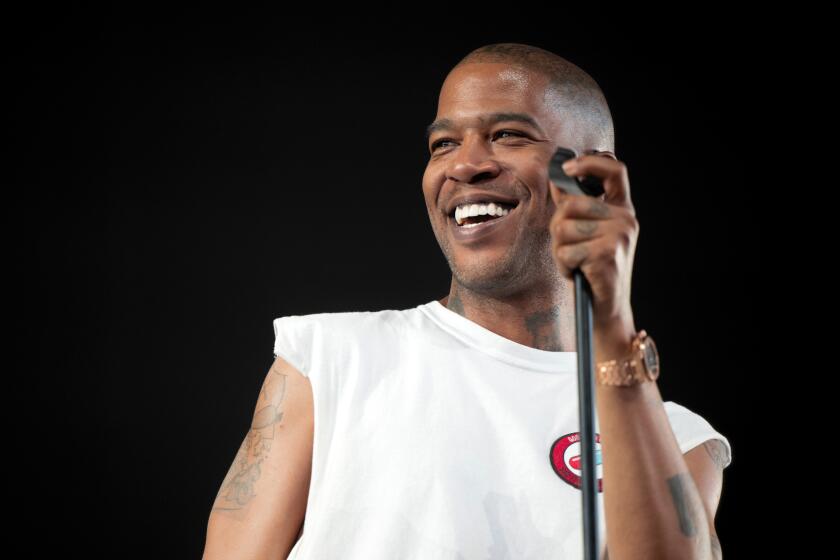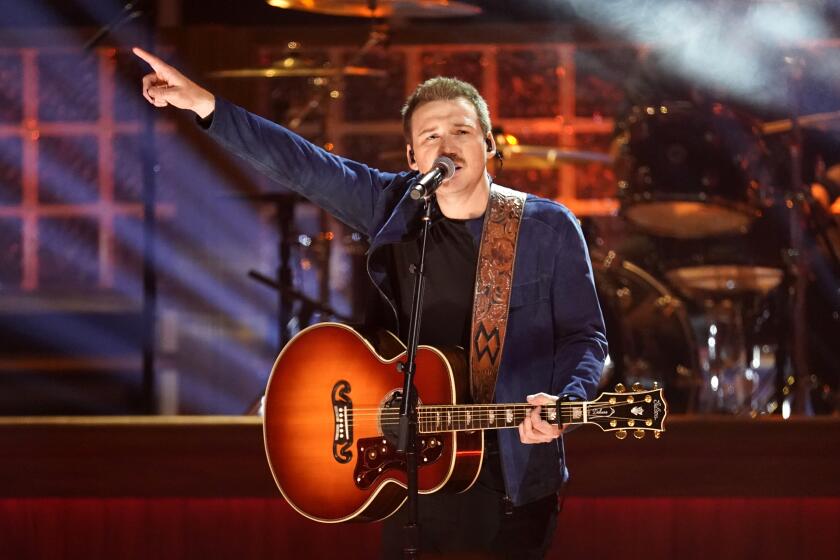Tracey Thorn’s lesson in maturing gracefully
Popular music, common wisdom says, is the province of kids. In 1959 it still hurt to be “a teenager in love,” but by 1965 the message had changed to “hope I die before I get old,” and from that moment onward, pop’s overt bias toward youth increased exponentially.
Truthfully, though, pop has always made room for maturity. In 1965, the same year the Who recorded “My Generation,” 49-year-old Frank Sinatra released the album “September of My Years” — a meditation on the notion of being past your prime that ranks among the great man’s best work. Country and soul chronicle life from the prom to the funeral home, and even hedonistic disco gave the world “I Will Survive,” which made 29-year-old Gloria Gaynor seem wise as a crone, though more glamorous.
Today it would seem we’re in the midst of another youthquake, led by Taylor Swift, Justin Bieber and Disney’s tween army. The new ingénues have a surprising counterpart: elders with attitude. Susan Boyle is the most famous example. In the soul world, always a safe place for grown women, the 54-year-old Sharon Jones and 64-year-old Bettye Lavette have garnered devoted followings after spending their supposed prime in obscurity.
Embracing the role of art-world doyenne is another way to stay relevant. Seventy-seven-year-old Yoko Ono has a new career as a dance club diva, thanks to remixes by the likes of the Junior Boys. And 62-year-old Laurie Anderson worked with young admirers Kieran Hebden (Four Tet) and Antony Hegarty on her new album, “Homeland,” which comes out in June and contains her strongest musical work in a decade.
Caught between the genuinely young and the elders who’ve tapped into their own psychic fountain are artists in what was formerly called middle age, now a vortex whipped up by the forces of technology (plastic surgery outside, a pharmacopeia inside) and our society’s deep terror of the natural. It’s OK to be triumphantly old, but visibly aging is a sign of weakness.
Some stars seem truly undone by this contradiction. Courtney Love is a prime example: Her roundly panned new album, “Nobody’s Daughter,” is one long rant against the accidents and bad choices that brought her to 45.
But then, Love has hit her mid-40s in a moment that’s proving tough for even women much more equipped than she: the era of the “cougar.” Allegedly originating in Canadian hockey locker rooms to describe older female camp followers, the cougar tag is one of those insults that can seem like a compliment, like “hot-blooded Latino” or “fashion-obsessed gay man.”
Taken up by many an anxious Hollywood leading lady and made super-heroic by Madonna as she turns into hard candy before our eyes, the cougar role is an enticing trap. Madonna’s art has always been about entering a self-created total environment in which limitations evaporate; if the cougar role hadn’t existed, she would have invented it. But it’s still a little depressing that the biggest female pop star of the past half-century has fallen so deeply into this role that, at 51, she can’t find her way to her own “September Song.”
Can the cougar be combatted, from within if not without? One answer comes in the form of a startling new album by Tracey Thorn, the 47-year-old chanteuse known for collaborating with Ben Watt in the longstanding dance-pop duo Everything But the Girl. (They’re newlyweds, having married in 2009 after three kids and 28 years together.) Thorn describes “Love and Its Opposite,” coming out May 18 on Merge Records in the U.S., as an attempt to describe “real life after 40” — a tricky proposition, since “real” is different for everyone. What these songs truly are is specific. Without undue drama or too much prettifying metaphor, Thorn hunkers down with the relevant emotions: worry, compassion and the steadfast wish to persevere, as well as flashes (hot or otherwise) of old regret and new desire.
Thorn’s vibrato-less alto is restrained but easeful, influenced by samba and torch singers like Peggy Lee. She deploys it within settings that play up the conversational ease of her lyrics. Her subjects are sometimes obvious — there’s a divorce song, and one about open-eyed sex with a longtime lover, and another targeting the singles bar. More surprising is “Hormones,” a jaunty mother-daughter dialogue that takes on the taboo subject of menopause.
With traces of the electronic rhythms Thorn and Watt have explored in earlier EBTG efforts, and cover songs (including a duet with Jens Lekman) that connect her with the rising stars of continental pop, “Love and Its Opposite” resides firmly in the current moment. The album also draws a map toward Nashville, where a focus on family life and tradition makes coming to terms with adulthood a prime subject. Thorn would surely consider it an honor to stand among the several generations of country stars — male and female — who have proved that there’s more to aging gracefully than showing off a hard body and a feline heart. With “Love and Its Opposite,” she earns that place.
More to Read
The biggest entertainment stories
Get our big stories about Hollywood, film, television, music, arts, culture and more right in your inbox as soon as they publish.
You may occasionally receive promotional content from the Los Angeles Times.






